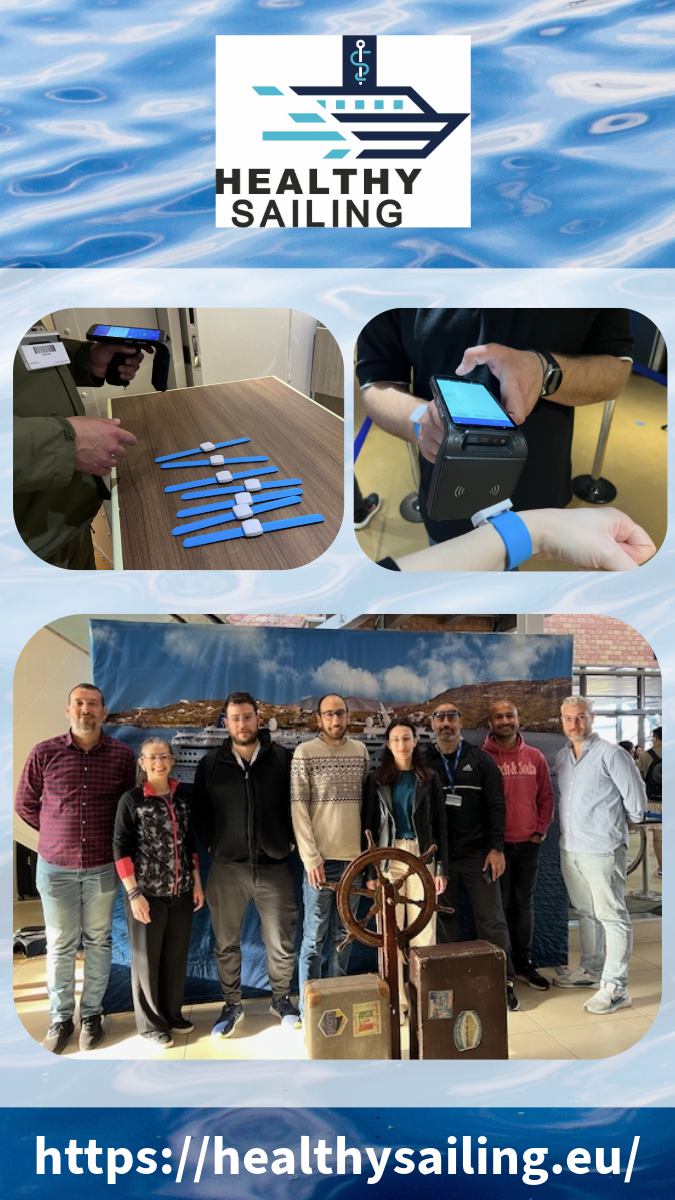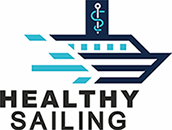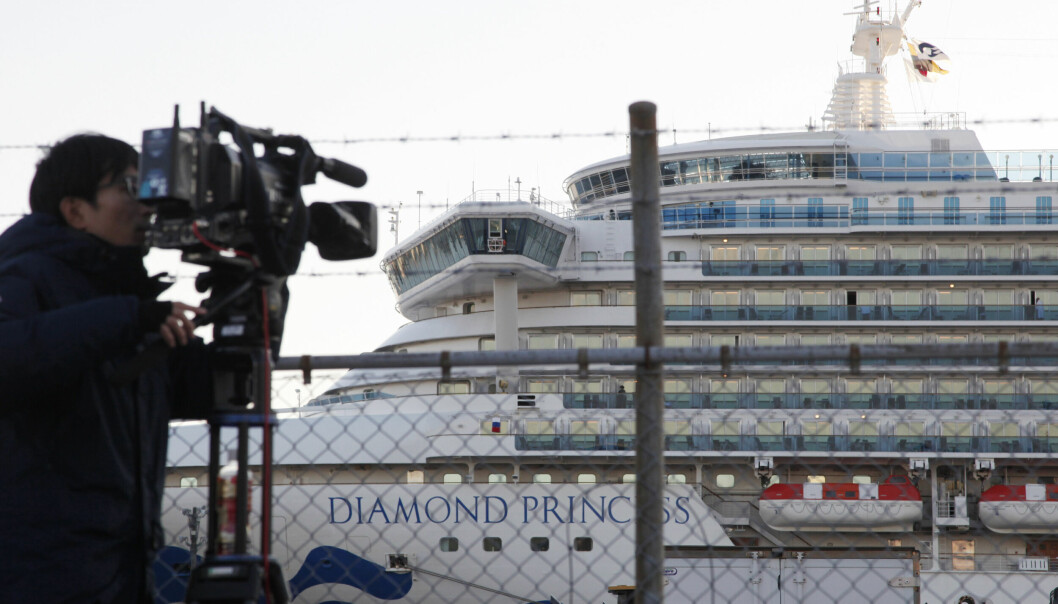
Date: April 22, 2025
Location: Lavrion – Aegean Sea
The HEALTHY SAILING consortium successfully conducted a major field visit and live technological demonstration of the “integrated e-pass based on the One-ID concept” during a three-night voyage aboard the Celestyal Discovery from 11 to 14 April 2025. This key milestone supports the objectives of Task 6.2 and Task 3.6.2 and marks significant progress toward integrating digital health technologies into the cruise travel ecosystem.
Background: Advancing Health Security with Integrated Digital Solutions
The integrated e-pass prototype is designed to enhance health surveillance and safety protocols in the cruise industry, using wearable RFID-enabled bracelets combined with a network of stationary and portable RFID readers. The system is connected to the Healthy Sailing E-Surveillance System (E-SS) and aims to:
- Streamline embarkation and disembarkation procedures
- Facilitate real-time validation of health documentation
- Enable automated, accurate contact tracing onboard
Each passenger is assigned a wearable that stores a unique identifier. When scanned, this identifier retrieves relevant health data (e.g., vaccination or recovery certificates) from E-SS. For contact tracing, RFID readers detect proximity interactions, enabling rapid response protocols in case of infection.
Demonstration Overview
Eight researchers from partner organizations participated in the onboard trials:
- FREDU, Task Leader
- SIMFWD
- ICCS
- NKUA
- SHIPSAN
- UTH
The demonstration involved three core scenarios, two conducted onboard and one at the Lavrion cruise terminal:
1. Embarkation and Crowd Control (Ship Gangway Area)
Mock passengers equipped with RFID-enabled bracelets were processed through a simulated embarkation procedure. Using both portable and stationary RFID readers:
- Crew could instantly retrieve and verify health documentation.
- Passengers were automatically identified at entry points, ensuring fast and safe processing.
2. Contact Tracing Simulation (Ship Dining Room)
Stationary RFID readers monitored bracelet interactions during a simulated dining experience. The system captured timestamped proximity data, which can be post-processed to:
- Identify individuals in close contact with a confirmed infected person.
- Generate proximity logs for epidemiological assessment.
3. Port Terminal Check-In (Lavrion)
At the Lavrion cruise terminal, demonstrations included:
- Manual scanning at check-in counters via portable RFID readers.
- Automated identification through stationary readers placed at strategic entry points.
Outcomes and Next Steps
All three scenarios were successfully executed and recorded, providing strong evidence of the system’s practical feasibility in real-world environments.
The immediate next steps include:
- Feasibility assessment by UKE based on demonstration footage.
- A detailed report by task contributors highlighting improvements to be made.
- Development of operational instructions and procedures for both shipboard and terminal use.
- A strategic plan outlining the optimal placement of RFID readers for maximum coverage and efficiency.
Significance
This demonstration reflects the HEALTHY SAILING project’s commitment to innovative, data-driven public health solutions for the cruise industry. As passenger expectations for health and safety grow, such integrated systems will play a critical role in reshaping safe travel protocols post-pandemic.
The project continues to advance toward its goal of a fully operational digital surveillance framework that supports public health without compromising the travel experience.
For more information on the Healthy Sailing project, visit healthysailing.eu




